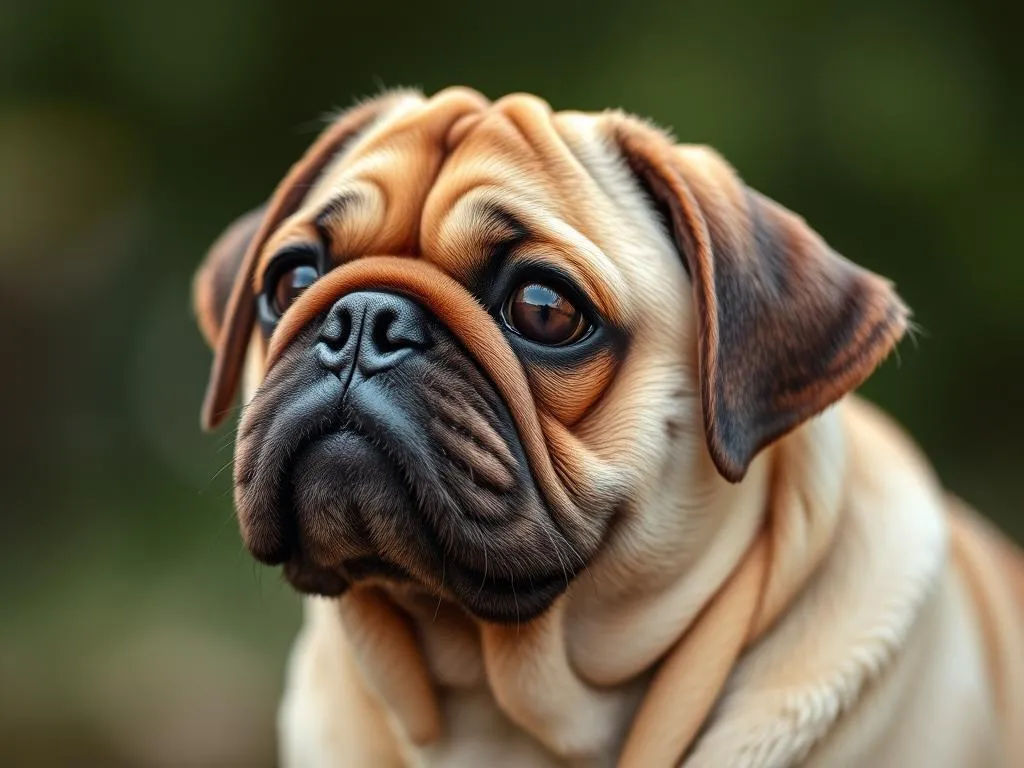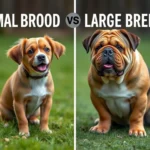
Puggles are an adorable crossbreed that has captured the hearts of dog lovers around the world. Combining the playful nature of the Beagle with the affectionate disposition of the Pug, these charming little dogs have become increasingly popular as family pets. Understanding the Puggle facts is essential for potential owners, as it helps in making informed decisions about whether this breed is the right fit for their lifestyle.
History of the Puggle
Origins
The Puggle is a relatively modern crossbreed, emerging in the late 1980s. It is a mix between the Beagle and the Pug, two breeds known for their unique characteristics and lovable traits. The intentional breeding of these two breeds aimed to create a companion dog that included the Beagle’s playful energy and the Pug’s affectionate nature. This combination resulted in a dog that is not only cute but also has a friendly personality that appeals to many families.
Development
The Puggle gained popularity quickly following its introduction. By the early 2000s, Puggles were being recognized in various dog shows and events. However, they have yet to receive full recognition from major kennel clubs, such as the American Kennel Club (AKC). Some organizations, like the Designer Breed Registry, acknowledge the Puggle as a recognized breed. This lack of formal recognition does not diminish their charm or popularity among dog enthusiasts.
Physical Characteristics
Size and Weight
One of the appealing Puggle facts is their size. Typically, Puggles stand between 10 to 15 inches tall at the shoulder and weigh around 15 to 30 pounds. This makes them a great choice for families who may not have the space for larger breeds but still want a dog with personality and presence.
Coat and Colors
Puggles have a short, smooth coat that is easy to maintain. Their coat is generally low-shedding, which can be a plus for allergy sufferers. Common color variations include fawn, black, and a mix of these colors, often with the characteristic dark markings of a Pug.
Distinctive Features
Puggles are easily recognizable due to their unique physical features. They inherit the Pug’s flat face and large, expressive eyes, giving them an endearing appearance. Their tails are typically curled and are reminiscent of the Pug’s characteristic tail. The body shape is more elongated, reflecting their Beagle ancestry, which contributes to their playful and energetic look.
Temperament and Behavior
General Personality Traits
When exploring Puggle facts, one cannot overlook their remarkable temperament. Puggles are known for being friendly, sociable, and affectionate. They thrive on human interaction and enjoy being a part of family activities. Their playful nature makes them great companions for both children and adults.
Interaction with Families
Puggles are particularly well-suited for families with children due to their playful and gentle disposition. They are typically patient and tolerant, making them excellent playmates. Additionally, they tend to get along well with other pets, adding to their appeal as family dogs.
Training and Intelligence
While Puggles are intelligent, they can also be a bit stubborn, which presents certain training challenges. Early socialization and obedience training are crucial to help them grasp commands and develop good behavior. Positive reinforcement methods work best to motivate them during training sessions. Some common behavioral challenges include barking and separation anxiety, which can be managed with consistent training and socialization.
Health Considerations
Common Health Issues
Understanding Puggle facts also involves awareness of potential health issues. While Puggles are generally healthy, they can be prone to certain genetic conditions inherited from their parent breeds. Common health issues include hip dysplasia, eye problems, and respiratory issues due to their brachycephalic (flat-faced) structure. Lifespan expectations for Puggles range from 10 to 15 years, making regular veterinary care essential to monitor their health.
Preventative Care
Regular vet check-ups are vital for Puggles to ensure any health issues are caught early. Vaccination schedules should be adhered to, and it’s important to maintain a balanced diet tailored to their specific needs. A healthy diet helps prevent obesity, which can exacerbate many health issues common in this breed.
Care and Maintenance
Grooming Needs
In terms of grooming, Puggles require minimal maintenance. Their short coat should be brushed weekly to remove loose hair and keep their skin healthy. Regular dental care is also important, as dental issues can be common in small breeds. Bathing should be done as needed, particularly if they get dirty during play.
Exercise Requirements
Puggles are energetic dogs that require regular exercise to keep them healthy and happy. Daily walks, playtime in the yard, and interactive games are recommended to meet their exercise needs. Aim for at least 30 minutes to an hour of activity each day to prevent boredom and potential behavioral issues.
Nutrition Guidelines
When considering Puggle facts, it’s essential to focus on nutrition. High-quality dog food formulated for their size and energy level is best. Portion control is crucial, as Puggles can be prone to obesity. It’s recommended to consult with a veterinarian to determine the appropriate diet and portion sizes for your Puggle.
Living with a Puggle
Ideal Living Environment
Puggles adapt well to various living environments, whether it’s a house with a yard or an apartment. They do require some space to move around, but they are generally well-suited for smaller living areas as long as they receive sufficient exercise. Climate considerations are also important; Puggles can be sensitive to extreme heat due to their brachycephalic nature, so ensure they have a cool, comfortable environment.
Socialization Needs
Socialization is a critical aspect of raising a well-adjusted Puggle. Early exposure to different people, environments, and other animals will help them develop into a well-rounded dog. Regular visits to dog parks or playdates with other dogs can foster good social skills and reduce anxiety in new situations.
Time Commitment
Owning a Puggle requires a significant time commitment. Daily care, exercise, and companionship are essential for their well-being. Puggles thrive on interaction with their families, so be prepared to dedicate time to play and train them each day.
Conclusion
In summary, Puggles are a delightful breed that brings joy and companionship to many families. Their friendly nature, adaptability, and playful demeanor make them excellent pets. Understanding the essential Puggle facts covered in this article will help potential owners appreciate the breed’s unique qualities and requirements. If you’re considering adding a Puggle to your family, remember to do your research and commit to responsible ownership to ensure a happy and healthy life for your new furry friend.
FAQs about Puggles
What is a Puggle?
A Puggle is a crossbreed dog, a mix between a Beagle and a Pug, known for its friendly and sociable nature.
Are Puggles good with children?
Yes, Puggles are generally great with children due to their playful and gentle temperament.
Do Puggles require a lot of exercise?
Puggles are energetic dogs that require regular exercise, ideally 30 minutes to an hour daily.
What are common health issues in Puggles?
Puggles may face health issues such as hip dysplasia, eye problems, and respiratory issues due to their flat faces.
How long do Puggles typically live?
The average lifespan for a Puggle is between 10 to 15 years, depending on their overall health and care.
Are Puggles easy to train?
Puggles are intelligent but can be stubborn, so early socialization and consistent training with positive reinforcement are essential.
By understanding these Puggle facts, prospective owners can ensure they are well-prepared to welcome this loving breed into their homes.









